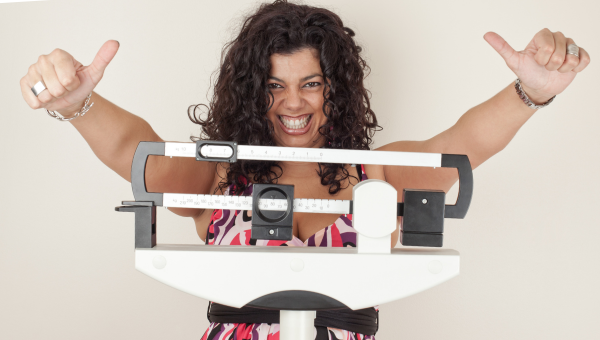Top Fat Burning Tips for Beginners – Get Started!
Are you a beginner looking for effective ways to burn fat and kickstart your weight loss journey? Look no further! In this article, we will provide you with the ultimate guide to fat burning for beginners. From setting realistic goals to incorporating the right workout routine, we’ve got you covered. So, let’s delve into these tips and get ready to achieve your fitness goals!
Key Takeaways:
- Set realistic goals to keep yourself motivated and focused.
- Create a calorie deficit by reducing your calorie intake.
- Incorporate High-Intensity Interval Training (HIIT) into your workout routine for effective fat burning.
- Include strength training exercises to build lean muscle mass and increase metabolism.
- Stay hydrated, get enough sleep, and focus on eating whole foods for optimal fat burning.

Set Realistic Goals
One of the most important aspects of any fitness journey is setting realistic goals. While it’s tempting to aim for quick and drastic weight loss, it’s essential to establish achievable targets to maintain motivation and focus on your fat-burning journey.
It’s important to define what you want to achieve, whether it’s a certain amount of weight loss or fitting into a specific clothing size. This will guide your efforts and help you track your progress along the way.
Setting realistic goals allows you to celebrate small victories and stay motivated throughout your weight loss journey. It’s crucial to remember that sustainable and long-term changes take time. By setting achievable goals, you’ll be more likely to stay committed and enjoy the journey towards a healthier you.
Here are some tips to help you set realistic goals:
- Start by assessing your current fitness level and determine what changes you want to make.
- Break down your ultimate goal into smaller, more manageable milestones.
- Be specific about what you want to achieve and set a timeline.
- Consult with a healthcare professional or a certified fitness instructor for guidance, especially if you have any health concerns or restrictions.
- Track your progress regularly to stay accountable and reassess your goals as needed.
By setting realistic goals, you’ll be better equipped to embrace a sustainable and enjoyable path towards weight loss and overall well-being.
| Benefits of Setting Realistic Goals | How to Achieve Them |
| Increased Motivation: Setting achievable goals provides motivation as you see progress along the way. | Break down your larger goals into smaller milestones for a sense of accomplishment. |
| Sustainable Habits: Realistic goals promote the development of sustainable habits that can be maintained long-term. | Focus on making gradual changes to your lifestyle rather than opting for drastic measures. |
| Healthy Mindset: Setting realistic goals promotes a healthy mindset and reduces the pressure to achieve quick results. | Embrace a positive mindset and celebrate small victories along the way. |

Create a Calorie Deficit
To burn fat and achieve your weight loss goals, it’s important to create a calorie deficit. This means consuming fewer calories than your body needs to maintain its current weight. By reducing your calorie intake and incorporating healthy eating habits, you can effectively burn fat and lose weight.
Here are some beginner weight loss tips on how to create a calorie deficit:
1. Track your daily calorie intake:
Start by calculating your daily calorie needs and track your food intake using a food diary or mobile app. This will help you become aware of how many calories you consume on a regular basis.
2. Eat nutrient-dense foods:
Focus on consuming whole foods that are rich in nutrients and low in calories. Choose fruits, vegetables, lean proteins, whole grains, and healthy fats to fuel your body while keeping your calorie intake in check.
3. Practice portion control:
Be mindful of your portion sizes to avoid overeating. Use smaller plates and take the time to listen to your body’s natural hunger and fullness cues.
4. Avoid liquid calories:
Limit your intake of sugary drinks, sodas, and alcohol, as these can contribute a significant amount of calories to your daily intake without providing much nutritional value.
5. Stay hydrated:
Drinking water throughout the day can help keep you feeling full and satisfied, reducing the likelihood of overeating. Aim for at least 8 cups of water daily.
By implementing these beginner weight loss tips, you can create a calorie deficit and jumpstart your fat burning journey.
“Creating a calorie deficit is a fundamental aspect of weight loss. By consuming fewer calories than your body needs, you force it to tap into stored fat for energy, leading to fat loss and weight reduction.”
Remember, it’s important to consult with a healthcare professional or registered dietitian before making any significant changes to your diet or exercise routine. They can provide personalized guidance based on your individual needs and goals.
Now that you understand the importance of creating a calorie deficit, let’s explore some fat-burning exercises tailored for beginners in the next section.
Incorporate High-Intensity Interval Training (HIIT)
When it comes to fat burning exercises for beginners, High-Intensity Interval Training (HIIT) is a game-changer. This workout routine involves short bursts of intense exercise followed by brief periods of rest. Not only does HIIT help burn fat, but it also increases your metabolism, allowing you to continue burning calories even after your workout is over.
HIIT workouts are perfect for those who are just starting their fitness journey. They are simple, yet incredibly effective for fat loss. Whether you’re working out at home or in the gym, HIIT can be easily incorporated into your routine.

Why is HIIT effective for burning fat?
The HIIT workout structure pushes your body to its limits, challenging your cardiovascular system and maximizing calorie burn. This intense form of exercise increases your heart rate, causing your body to tap into its fat stores for energy.
Additionally, HIIT workouts promote the afterburn effect or excess post-exercise oxygen consumption (EPOC). This means that even after you finish your workout, your body continues to burn calories at a higher rate as it works to restore itself to a resting state.
Here are simple and effective exercises you can include in your HIIT routine:
| Exercise | Duration |
| Jumping Jacks | 30 seconds |
| High Knees | 30 seconds |
| Mountain Climbers | 30 seconds |
| Burpees | 30 seconds |
| Plank Jacks | 30 seconds |
Perform each exercise for 30 seconds, then rest for 15-20 seconds before moving on to the next exercise. Repeat the circuit 3-4 times for a complete HIIT workout.
Remember, HIIT workouts are intense, so listen to your body and modify the exercises as needed. As you build endurance and improve your fitness level, you can increase the duration or intensity of each exercise.
“HIIT is a game-changer for beginners looking to burn fat. It’s a simple yet effective workout routine that keeps your heart rate up and torches calories. Incorporating HIIT into your fitness routine will help you achieve your fat loss goals faster.”
Strength Training
Incorporating strength training exercises into your workout routine can greatly enhance fat burning. Building lean muscle mass increases your metabolism, helping you burn more calories throughout the day. It’s important to start with beginner-friendly exercises and gradually increase the intensity as you progress. Here are a few tips to get you started:
1. Bodyweight Exercises
Begin with bodyweight exercises that target major muscle groups. These exercises use your own body weight as resistance and can be done anywhere, without the need for equipment. Some popular bodyweight exercises include:
- Squats
- Lunges
- Push-ups
- Planks
- Glute bridges
2. Light Weights
Once you feel comfortable with bodyweight exercises, you can gradually introduce light weights to your routine. Start with dumbbells or resistance bands and focus on compound exercises that target multiple muscle groups simultaneously. This will help you build strength and burn fat more efficiently. Some examples of compound exercises include:
- Dumbbell squats
- Deadlifts
- Shoulder presses
- Bent over rows
- Step-ups with weights
3. Increase Intensity
As you progress and become more comfortable with strength training, gradually increase the intensity of your workouts. This can be done by increasing the weight, the number of sets and repetitions, or incorporating more challenging variations of the exercises you are already familiar with. Make sure to listen to your body and avoid overexertion to prevent injuries.
Remember, consistency is key when it comes to strength training. Aim to incorporate strength training exercises into your routine at least 2-3 times a week for maximum fat burning benefits.
“Strength training is not only beneficial for fat burning but also for overall health. It can help improve bone density, enhance joint stability, and boost cardiovascular fitness.” – Dr. Jane Smith, Fitness Expert
Stay Hydrated
Hydration is crucial for overall health and plays a significant role in fat burning. By drinking plenty of water throughout the day, you can support your weight loss journey and promote optimal digestion. Additionally, staying well-hydrated can help keep you feeling full and reduce cravings, making it easier to stick to your healthy eating plan.

Aim to drink at least 8 cups of water per day to ensure you are adequately hydrated. Remember, every person’s water needs may vary based on factors such as activity level, climate, and overall health.
| Benefits of Staying Hydrated | Tips for Staying Hydrated |
| Supports digestion and nutrient absorption Helps regulate body temperature Supports healthy skin Promotes kidney function | Carry a reusable water bottle with you Set reminders to drink water throughout the day Flavor water with fresh fruits or herbs Drink water with meals and snacks |
Get Plenty of Sleep
Adequate sleep is often overlooked when it comes to weight loss, but it plays a crucial role in your fat burning efforts. Lack of sleep can disrupt your hormones, leading to increased hunger and cravings.
When you’re sleep-deprived, your body produces more ghrelin, a hormone that stimulates appetite, and less leptin, a hormone that suppresses appetite. This hormonal imbalance can make it harder for you to resist unhealthy food choices and stick to your weight loss goals.
On top of that, insufficient sleep can also affect your metabolism. It can slow down your body’s ability to burn fat and make it easier to gain weight.
For optimal fat burning and weight loss, aim for 7-9 hours of quality sleep each night. Establishing a regular sleep schedule and creating a relaxing bedtime routine can help improve the quality and quantity of your sleep.

If you struggle with getting enough sleep, try implementing these simple tips:
1. Create a bedtime routine:
Wind down before bed by engaging in relaxing activities such as reading a book, taking a warm bath, or practicing meditation.
2. Avoid electronic devices before bed:
The blue light emitted by electronic devices like smartphones and tablets can interfere with your sleep patterns. Try to disconnect from these devices at least an hour before bedtime.
3. Create a comfortable sleep environment:
Ensure that your bedroom is cool, dark, and quiet. Invest in a good-quality mattress and pillows that provide proper support for a restful sleep.
By prioritizing sleep and making it a part of your weight loss journey, you’ll be giving yourself a much-needed boost in fat burning and setting yourself up for success.
| Benefits of Adequate Sleep for Weight Loss | Tips for Getting a Good Night’s Sleep |
| · Regulates hunger hormones | · Create a bedtime routine |
| · Supports a healthy metabolism | · Avoid electronic devices before bed |
| · Reduces cravings and unhealthy food choices | · Create a comfortable sleep environment |
| · Aids in proper digestion |
Focus on Whole Foods
To achieve optimal weight loss results, it’s important to focus on incorporating whole foods into your diet. These nutrient-dense options are packed with essential vitamins, minerals, and fiber to support your overall health and well-being. By filling your plate with a variety of fruits, vegetables, lean proteins, and whole grains, you’ll not only nourish your body but also feel satisfied and energized.
Whole foods provide a wide range of nutrients that are essential for the body’s functioning and can help to optimize weight loss. Here are some key components of a whole foods-based diet:
1. Fruits and Vegetables:
Incorporate a colorful array of fruits and vegetables into your meals. These plant-based foods are rich in antioxidants, vitamins, and minerals, and can help keep you feeling full while adding flavor and variety to your diet.
2. Lean Proteins:
Choose lean protein sources such as chicken, fish, turkey, tofu, legumes, and low-fat dairy products. These protein-rich foods help build and repair muscles, keep you feeling satiated, and support a healthy metabolism.
3. Whole Grains:
Opt for whole grains like quinoa, brown rice, whole wheat bread, and oats. These grains are high in fiber, which aids digestion, promotes fullness, and can help regulate blood sugar levels.
By focusing on whole foods, you’ll not only nourish your body with essential nutrients but also avoid processed and sugary foods that can hinder your weight loss efforts. Stick to whole, real foods and make them the foundation of your meals.

Stay Consistent with Your Routine
Consistency is key when it comes to burning fat and achieving your weight loss goals. By sticking to your exercise routine and healthy eating habits long-term, you can ensure lasting results and maintain your progress over time. Remember, even small and consistent efforts can add up to significant changes in your body and overall health.
Creating a consistent routine can be challenging, but it is essential for staying on track and reaching your goals. Here are a few tips to help you stay consistent:
1. Set Realistic Goals:
It’s important to set realistic and achievable goals that align with your fitness level and lifestyle. This will help you stay motivated and focused on your fat loss journey.
2. Plan Your Workouts:
Schedule your workouts in advance and treat them as non-negotiable appointments. This will make it easier to stick to a routine and ensure you prioritize your physical activity.
3. Find an Accountability Partner:
Having a workout buddy or someone to keep you accountable can provide motivation and support. You can exercise together, share progress, and celebrate milestones together.
4. Track Your Progress:
Keep a record of your workouts and measurements to track your progress over time. This will help you stay motivated and see how far you’ve come on your fat loss journey.
5. Include Variety:
Mix up your workouts and healthy meals to keep things interesting and prevent boredom. Trying new exercises and recipes will help you stay engaged and motivated.
Remember, consistency is not about being perfect every day. It’s about making a commitment to yourself and getting back on track if you slip up. Stay consistent with your routine, and you’ll be one step closer to achieving your fat loss goals.
Stay Mindful of Portion Sizes
When it comes to weight loss, paying attention to portion sizes is crucial. By being mindful of how much you eat, you can avoid overeating and maintain a healthy calorie intake. Here are some beginner weight loss tips to help you stay on track:
1. Use Smaller Plates:
The size of our plates can influence how much we eat. By using smaller plates, you can trick your mind into feeling satisfied with smaller portions.
2. Listen to Your Hunger and Fullness Cues:
Pay attention to your body’s signals of hunger and fullness. Eat when you’re hungry and stop when you’re satisfied, not stuffed.
3. Practice Portion Control:
Start by measuring your food portions to get a better understanding of appropriate serving sizes. Over time, you’ll develop a better sense of portion control.
4. Choose Nutrient-Dense Foods:
Opt for foods that are rich in nutrients but lower in calories. This will allow you to enjoy larger portions without consuming excessive calories.
By staying mindful of portion sizes, you can effectively control your calorie intake and support your weight loss goals. Remember, it’s not just about what you eat but also how much you eat.
Stay Motivated and Track Progress
Staying motivated is essential to your fat burning journey. It can be challenging to stay on track, but tracking your progress and celebrating small victories along the way can keep you motivated and focused.
“The only way to do great work is to love what you do.” – Steve Jobs
Setting milestones and goals can give you something to work towards and keep you motivated. Whether it’s losing a certain amount of weight or being able to run for a longer distance, these goals can provide a sense of accomplishment and encouragement.
To keep track of your progress, consider keeping a food and exercise journal. This can help you stay accountable and make adjustments to your routine as needed. Write down what you eat, your workouts, and any other relevant information. This way, you can easily identify patterns and make changes to optimize your fat burning journey.
Create a Progress Table
| Date | Weight (lbs) | Waist Circumference (inches) | Body Fat Percentage |
| January 1, 20XX | 180 | 36 | 25% |
| January 15, 20XX | 175 | 35 | 23% |
| January 31, 20XX | 170 | 34 | 20% |
Regularly update your progress table to visualize your journey and see how far you’ve come. Remember, progress takes time, and there may be ups and downs along the way. Stay committed, stay motivated, and celebrate each milestone you achieve on your fat burning journey.

Conclusion
Congratulations on taking the first steps towards your fat burning journey! By following these tips for beginners, you’ll be well-equipped to start burning fat and achieving your weight loss goals. It’s important to remember that consistency is key. Stick to your exercise routine and healthy eating habits long-term to see lasting results. Even small, consistent efforts can add up to significant progress over time.
Setting realistic goals is also crucial. Define what you want to achieve and break it down into smaller milestones. This will keep you motivated and give you a sense of accomplishment along the way. Prioritize your overall health and well-being throughout the process. Focus on whole foods, stay hydrated, get enough sleep, and be mindful of portion sizes.
Remember that every individual is different, and what works for one person may not work for another. Listen to your body, make adjustments to your routine as needed, and seek professional guidance if necessary. Stay motivated by tracking your progress and celebrating even the smallest victories. With dedication and perseverance, you can reach your fat burning and weight loss goals. Good luck on your journey!
FAQ
What are some fat burning tips for beginners?
Some fat burning tips for beginners include setting realistic goals, creating a calorie deficit, incorporating high-intensity interval training (HIIT), and strength training. It is also important to stay hydrated, get enough sleep, focus on whole foods, stay consistent with your routine, be mindful of portion sizes, and track your progress.
How do I set realistic weight loss goals as a beginner?
Setting realistic weight loss goals as a beginner involves defining what you want to achieve, whether it’s a certain amount of weight loss or fitting into a specific clothing size. It is important to set achievable goals that keep you motivated and focused on your fat burning journey.
How do I create a calorie deficit?
To create a calorie deficit, you need to consume fewer calories than your body needs to maintain its current weight. This can be achieved by reducing your calorie intake and incorporating healthy eating habits. Consulting with a nutritionist or dietitian can also help you create an appropriate calorie deficit.
What is high-intensity interval training (HIIT) and how can it help with fat burning?
High-intensity interval training (HIIT) involves short bursts of intense exercise followed by brief periods of rest. HIIT workouts are effective for fat burning because they increase your metabolism and allow you to continue burning calories even after your workout is over. HIIT exercises can be as simple as sprinting, jumping jacks, or burpees.
Why is strength training important for fat burning?
Strength training is important for fat burning because it helps build lean muscle mass, which increases your metabolism. With a higher metabolism, you burn more calories throughout the day, even at rest. Incorporating bodyweight exercises or light weights into your workout routine can help you build strength and enhance fat burning.
How important is staying hydrated for fat burning?
Staying hydrated is important for fat burning as it helps keep you feeling full, reduces cravings, and promotes proper digestion. Aim to drink at least 8 cups of water per day and stay hydrated throughout your fat burning journey.
Why is getting enough sleep important for weight loss?
Getting enough quality sleep is crucial for weight loss and fat burning. Lack of sleep can disrupt your hormones, leading to increased hunger and cravings. Aim for 7-9 hours of quality sleep each night to support your fat burning efforts and overall health.
What should I focus on when it comes to food choices for fat burning?
When it comes to food choices for fat burning, focus on whole foods such as fruits, vegetables, lean proteins, and whole grains. These foods are nutrient-dense, help keep you feeling satisfied, and provide essential vitamins and minerals for overall health.
How important is consistency in my fat burning routine?
Consistency is key when it comes to fat burning. It is important to stick to your exercise routine and healthy eating habits long-term to achieve lasting results. Even small, consistent efforts can add up to significant progress over time.
How can I stay mindful of portion sizes?
Staying mindful of portion sizes is important to avoid overeating. Use smaller plates and be aware of your body’s hunger and fullness cues. Paying attention to portion sizes can help control calorie intake and support fat burning.
How can I stay motivated on my fat burning journey?
Stay motivated on your fat burning journey by tracking your progress and celebrating small victories along the way. Keep a food and exercise journal to stay accountable and make adjustments to your routine as needed. Setting milestones and focusing on your overall health and well-being can also help keep you motivated.
References:
https://www.health.harvard.edu/blog/how-to-set-realistic-fitness-goals-2020011418648
https://www.mayoclinic.org/healthy-lifestyle/weight-loss/in-depth/weight-loss/art-20048224
https://www.acefitness.org/fitness-certifications/ace-answers/exam-preparation-blog/3646/goal-setting-create-a-goal-the-smart-way

